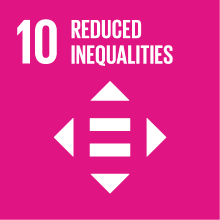INSTITUTIONS OF THE SPANISH-SPEAKING WORLD MOD. 1
- Academic year
- 2020/2021 Syllabus of previous years
- Official course title
- ISTITUZIONI DEI PAESI DI LINGUA SPAGNOLA MOD. 1
- Course code
- LT5050 (AF:331050 AR:177048)
- Teaching language
- Italian
- Modality
- On campus classes
- ECTS credits
- 6 out of 12 of INSTITUTIONS OF THE SPANISH-SPEAKING WORLD
- Degree level
- Bachelor's Degree Programme
- Academic Discipline
- M-STO/04
- Period
- 2nd Semester
- Course year
- 1
- Where
- TREVISO
- Moodle
- Go to Moodle page
Contribution of the course to the overall degree programme goals
In order to didactically address this diversification of Hispano-American America, a series of texts will be presented that address the intersection and comparison between cultures and the distinct periods of the struggles for independence from Spain, as well as internal struggles for geopolitical ambitions from different perspectives.
It follows that it would be impossible to develop, in the series of meetings established, the simple enumeration of the facts taken geographically or chronologically. Therefore, the decision to consider a selection of famous authors from different Spanish-speaking countries and a selection of their writings in different genres - chronicles, newspaper articles, essays, short stories, poems - will allow, as demonstrated by Jorge Luis Borges in his incomparable short story El Aleph, a vision of totality starting from the sum of heterogeneous elements of reality.
Expected learning outcomes
Overview of Hispano-America. Main original civilizations. Geographic location. Discovery of America. Historical framework. Spanish conquest of the continent. Notions on historical-social evolution. Theoretical-critical and cultural events.
Pre-requirements
Contents
Contents
Unit I
Presentation of the program. Geographical position in the planisphere of present-day Hispanic America. Detail of the borders of North America, Central America and South America.
Geographical location of the main societies of native peoples. Aztec Maya Incas. Features. Native peoples of South America. Characteristics.
Unit II
Discovery of America. Christopher Columbus. Journey of other explorers. Geographical and temporal location of the main routes from Spain to America. Illustrative map. XVI century. Exploration and conquest phase. Exploitation of natural resources. Map of virreinatos in South America.
Unit III
North America: Mexico. Central America: Cuba. Colombia. South America: Peru
Mexico. Readings: “Los hijos de la Malinche”. “Conquista y colonia” in El laberinto de la soledad, Octavio Paz. The arrival of Hernán Cortés. Relations with the Aztecs.
Cuba: relations between Spain and Cuba. Susanna Regazzoni's La condesa de Merlín.
The word: for independence from Spain. José Martí. Article on the American libertadores of Venezuela, Peru and Argentina. A proposal for the American union. Readings: “Tres héroes” and “Nuestra América”.
Colombia: A magical realism or a costumbrista realism? Reading of a selection of texts by Gabriel García Márquez.
Peru. Strategies and tricks of the Libertador del Peru General José de San Martín to free Lima without guns. Costume painting "Con días y ollas venceremos" in Tradiciones peruanas by Ricardo Palma.
Unit IV
Variations
Eduardo Galeano (Uruguay) on Chile: Selection of texts from El libro de los abrazos
Selection of texts by Juan Carlos Onetti (Uruguay) on Argentina. Between history and fiction: Eva Perón. “Ella” in Cuentos Completos
Jorge Luis Borges (Argentina) on the constitutive matrix of the political-social configuration of the twentieth century: Civilización vs. Barbarie. “El cautivo” in Obras Completas.
Unit V
Dictatorships and War in the Cono Sur. Chile and Argentina
1982. The war of Atlántico Sur.
Referral texts
Enciclopedia Historia Universal. Aztecas Mayas Incas.Tomo 9 . Buenos Aires Ed. Clarin. 2005
América Colonial y Monarquías absolutas. Tomo 11. Buenos Aires Ed. Clarín. 2005
AAVV: Historia. América y Europa entre el Siglo XIV y fines del siglo XVIII. Buenos Aires. Ed. Santillana en línea. 2015
Galeano Eduardo. Las venas abiertas de América Latina. México Siglo XXI. 1971.
Lobato Mirta Suriano Juan. Nueva historia argentina .Atlas histórico. Buenos Aires. Sudamericana. 2000.
Speranza Graciela, Cittadini Fernando. Partes de Guerra. Malvinas 1982. Buenos Aires. Edhasa s/f. Hay versión digital.
Zanatta Loris. Historia de América Latina. Buenos Aires S. XXI. 2012..
-Storia dell´America Latina Contemporanea. Bari-Roma. Ed. Laterza. 2017.
Specific bibliography
Borges Jorge Luis. Obras Completas. Buenos Aires. Emecé. 1974.
Galeano Eduardo. Crónica de la ciudad de Santiago y Neruda/1 en El libro de los Abrazos. galeano_el_libro_de_los_abrazos%20.pdf
García Márquez, Gabriel. Cien años de soledad . Buenos Aires. Sudamericana. 1967.
Martí José. Ismaelillo Versos sencillos y otras páginas. (Selección y prólogo Susana Zanetti). Buenos Aires. CEAL. 1980
--Páginas de José Martí. (selección y prólogo Fryda Schultz de Montovani ). Buenos Aires. EUDEBA. 1963.
Onetti Juan Carlos. Cuentos Completos. Madrid. Alfaguara. 1994.
Parma Ricardo. Tradiciones peruanas. Caracas Fundación Biblioteca Ayacucho. (comp. José Miguel Oviedo). 1979. Hay versión digital.
Paz Octavio. El Laberinto de la soledad. México. Fondo de cultura económica. 1959.
Assessment methods
Type of exam
Teaching methods
1) presentation of the author under study;
2) reading in Spanish language and analysis of the texts proposed in the bibliography.
Further information
2030 Agenda for Sustainable Development Goals
This subject deals with topics related to the macro-area "Poverty and inequalities" and contributes to the achievement of one or more goals of U. N. Agenda for Sustainable Development




